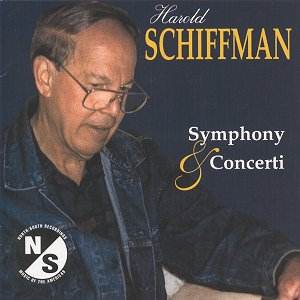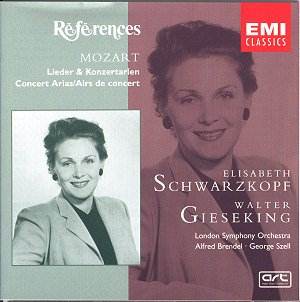 Composer: Harold Schiffman
Composer: Harold Schiffman
Works: Symphony (1961), Concerto for Oboe d’amore and String Orchestra (1988), Concerto for Piano and Orchestra (1982)
Performers: Julie Ann Giacobassi (oboe d’amore), Jane Perry-Camp (piano), Györ Philharmonic Orchestra, Hungarian Symphony Orchestra
Recording: Györ Evangelical Church, May 1998 (Symphony), MATAV Music House, Budapest, July 1998 (Oboe d’amore Concerto), June 1999 (Piano Concerto)
Label: NORTH/SOUTH RECORDINGS R 1021
Harold Schiffman, born in 1928, occupies a distinct niche in the American classical music landscape. His works often manifest a synthesis of lyrical expressiveness and formal rigor, aligning with a broader tradition of 20th-century American symphonism while avoiding the avant-garde extremes that characterize much of the period. This collection presents three significant works, illuminating Schiffman’s evolving compositional voice across three decades, from the robust Symphony of 1961 to the more intimate and nuanced concertos for oboe d’amore and piano.
The Symphony, composed in 1961, is structured in four movements, each exploring contrasting emotional landscapes. The opening Allegro appassionato initiates with a bold thematic statement, underpinned by sonata form, allowing for a rich development that features recapitulations and varied textures. The juxtaposition of slower, reflective passages with the vigorous material creates an engaging tension, showcasing Schiffman’s adeptness at orchestral color. The Adagietto grazioso, with its delicate scoring, stands out for its lyrical beauty, offering a moment of introspection before the lively Scherzo introduces a burlesque quality that lightens the mood. The final movement’s march-like theme and variations culminate in an exuberant conclusion, affirming Schiffman’s command of symphonic form, akin to his contemporaries like Walter Piston and Paul Creston.
The Concerto for Piano and Orchestra (1982) represents a more concentrated exploration of thematic material within a single movement. The work unfolds through clearly delineated sections, beginning with a statement that recurs throughout. The animated passages lead seamlessly into a spirited Scherzo, demonstrating Schiffman’s fluency in connecting contrasting moods. Jane Perry-Camp’s performance captures this dynamism, effectively balancing technical precision with expressive flair. The brief cadenza, a moment of introspective reflection, serves as a poignant reminder of the thematic richness that precedes it, culminating in a lively coda that invigorates the overall structure.
Schiffman’s Oboe d’amore Concerto (1988) completes this triptych with a distinctively lyrical character. Written for a member of the oboe family, it exploits the instrument’s full range, allowing Julie Ann Giacobassi to shine with her beautifully controlled sound and emotive phrasing. The concerto, with its predominantly lyrical themes, contrasts with the more vigorous character of the preceding works, weaving a tapestry of sound that resonates with warmth and intimacy. The orchestration is light yet effective, complementing the soloist without overshadowing her nuanced interpretations.
The recording quality is commendable, with a bright sound that enhances Schiffman’s orchestral textures, though it may verge on excessive brightness for some listeners. The performances, characterized by both conviction and technical prowess, effectively convey the spirit of Schiffman’s music, although the Hungarian orchestras might approach this repertoire with a sense of novelty. The engineering captures the clarity of individual lines, particularly in the concertos, where the interplay between soloist and orchestra is vital.
Schiffman’s music emerges as a compelling addition to the canon of 20th-century American classical music, deserving of wider recognition. The works presented here display his remarkable ability to balance lyricism with formal integrity, encapsulating the essence of American symphonism. This recording stands as a strong testament to Schiffman’s craft and the skill of the performers, making it a worthy exploration for those interested in the evolution of American orchestral music. The collection invites both familiar and new listeners to appreciate the richness of Schiffman’s contributions, ensuring that his music does not pale in comparison to his more widely celebrated contemporaries.



